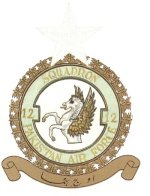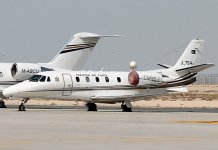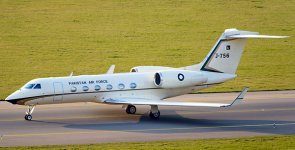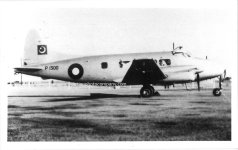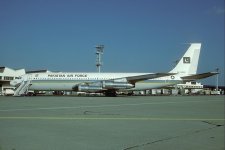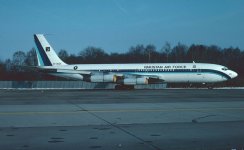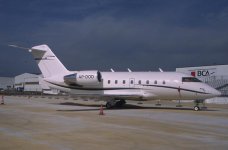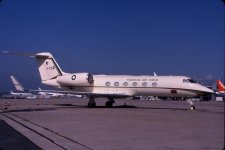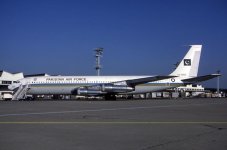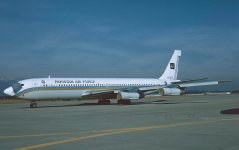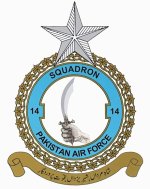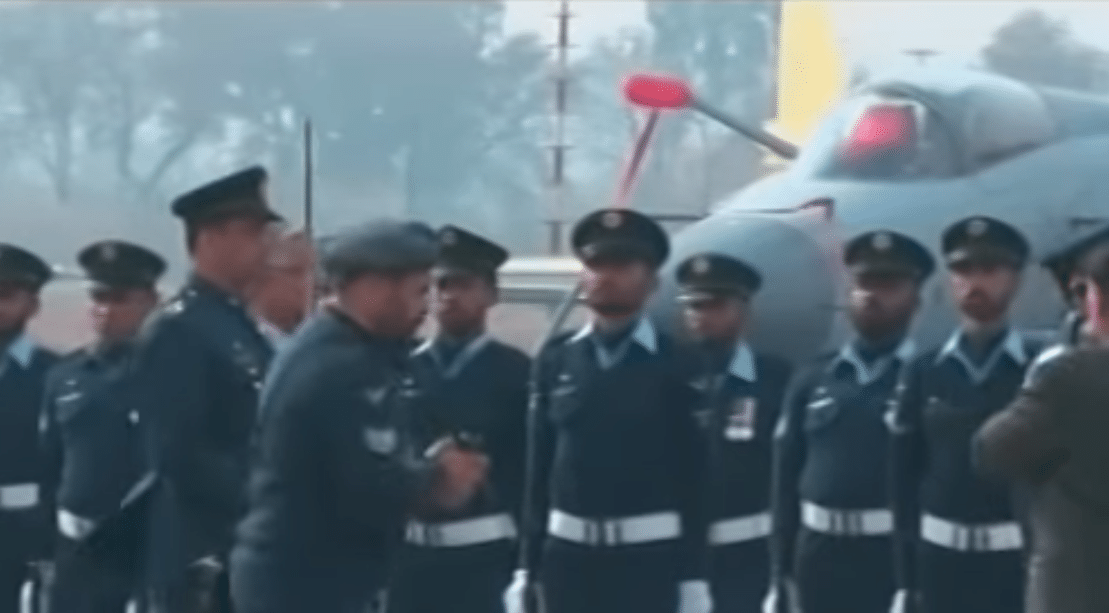Fatman17
THINK TANK: CONSULTANT
- Apr 24, 2007
- 37,451
- 43,829
- Country of Origin

- Country of Residence

- Thread starter
- #61
Lockheed Martin F-16A Fighting Falcon
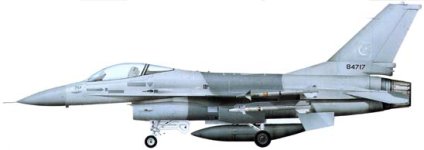
| Country of Origin: United States of America | ||||||||||||||||||||||||||||||||||||||||
| Type: Mulitrole Fighter | ||||||||||||||||||||||||||||||||||||||||
| Powerplant: One 65.3kN (14,670lb) dry and 106.0kN (23,830lb) with afterburning Pratt & Whitney F100-PW-100 turbofan. | ||||||||||||||||||||||||||||||||||||||||
| Performance: Max speed at 40,000ft over Mach 2.0 or 2125km/h (1145kt), at sea level 1427km/h (795kt). Max initial rate of climb over 50,000ft/min. Service ceiling above 50,000ft. Combat radius with six 1000lb bombs, hi-lo-hi 545km (295nm). | ||||||||||||||||||||||||||||||||||||||||
| Weights: Operating empty 6607kg (14,567lb), max takeoff 14,968kg (33,000lb) | ||||||||||||||||||||||||||||||||||||||||
| Accommodation: Pilot only, except two in tandem in F-16B | ||||||||||||||||||||||||||||||||||||||||
| Armament: One intermal M61A1 20mm cannon. Six underwing, one centerline and two wingtip hardpoints for up to 5435kg (12,000lb) of ordanance, including AIM-9, AIM-7, AIM-120, or Matra Magic AAMs, bombs, rockets, AGM-65 ASMs and Penguin anti ship missiles. | ||||||||||||||||||||||||||||||||||||||||
| Operators: Bahrain, Belgium, Denmark, Egypt, Greece, Indonesia, Israel, Jordan, Netherlands, Norway, Pakistan, Portugal, Singapore, South Korea, Taiwan, Thailand, Turkey, USA, Venezuela. | ||||||||||||||||||||||||||||||||||||||||
| History:The F-16 evolved from the USAF sponsored lightweight fighter program to evaluate the concept of a small and manoeuvrable fighter. In April General Dynamics and Northrop were selected to build two prototypes. The first General Dynamics YF-16 first flew on January 20 1974 and almost after a year of evaluation, was selected for further development. The first production F-16 flew in 1978. The F-16 was the first production fighter to feature fly-by-wire and relaxed stability. It also features wing/fuselage blending, a Westinghouse APG-66 radar, an advanced (for the time) cockpit with sidestick controller and a 30° reclined seat. The USAF selected the F-16 for production in early 1975. Later that year Belgium, Denmark, Norway and the Netherlands jointly selected the F-16 to build under licence in Europe and replace their 104Gs. The inferior GE J79 turbojet powered F-16/79 was offered for export to secondary status nations until the full F100 powered F-16A was offered for wider export. Production F-16s were built to Block 1, 5, 10 and 15 standard. Block 15 introduced the most noteworthy scan mode for the radar. The F-16XL Strike Fighter with cranked delta wing was passed over by the USAF in favor of the F-15E. The USAF took delivery of 272 Block 15 converted to ADF standard. The F-16A ADFs are air defence interceptors and feature upgraded radar, AIM-7 compatbility and a searchlight, and can be identified by their bulged fin/fuselage fairing. The F-16 MLU (mid life upgrade) program offers two color LCDs, wide angle HUD, NVG compatible cockpit, upgraded APG-66 radar, GPS, and new modular mission computer and a more powerful engine. | ||||||||||||||||||||||||||||||||||||||||
| Operational Service with PAF: Introduction of the General Dynamics F-16A/B came about following a letter of agreement that was signed in December 1981. The intial order was in shape of 32 single-seat F-16As and 8 two-set F-16Bs under the program Peace Gate I. These were allocated US serial numbers 81-0899/0930 and 81-0931/0938, respectively, under the terms of Foreign Military Sales (FMS). The contract was modified before it became too far advanced to 28 F-16As and 12 F-16Bs, reflecting Pakistan's possible future need to conduct all its own training in-house. The combat effectiveness of the force was altered very little since both versions are combat capable. Change within the FMS serialling saw aircraft 91-0927/0930 cancelled and 'new' F-16Bs 81-1504/1507 being added. This apart, the FMS serials are not reflected in the PAF serialling system. All PAF aircraft were built to the Block 15 standard. The Six pilots and about 90 technicians underwent training in the US during 1982, with aircrew transition being undertaken at Hill AFB, Utah, by the 388th Tactical Fighter Wing's 412st Tactical Fighter Squadron. The first aircraft was accepted at Fort Worth in October 1982. On completion of the conversion course, an initial batch of two F-16As and four F-16Bs was ferried in January 1983 to McDill AFB, Florida before being inflight refuelled across the Atlantic Ocean to Lajes in the Azores, and then to Dhahran, Saudi Arabia, where they were officially handed over. The first two legs were flown by American delivery pilots although four PAF pilots occupied the rear seats in the F-16Bs. The flight from Dhahran to Pakistan was completed by PAF pilots, including Wing Commander Shahid Javed, who was to lead the first unit to equip, No. 11 Squadron at Sargodha. Subsequent deliveries took the same route and all 40 F-16s had entered PAF serive by 1985. This allowed for the establishment of two more squadrons, the first being No. 9 Squadron, which converted in 1984 at Sargodha. It was followed by No. 14 Squadron in 1986 which also underwent the conversion process at Sargodha, but later moving to its operational base at Kamra in October of that year. It is believed to have recieved the last 12 of the aircraft from Pakistan's original order, 717 to 728. No. 11 Squadron also acts as the OCU for the PAF. On September 9, 1993, No. 14 Squadron gave up its F-16s for F-7Ps. A nine-ship formation of the remaining F-16s made a farewell pass over Minhas before being flown to Sargodha. After enforcement of the Pressler Amendment by the U.S. Government in 1990, all sales and support was suspended. This resulted in a change of force requirements, whereas earlier PAF had envisioned a 71 strong fleet of F-16s, supported by F-7s and Mirages, it now had to procure additional F-7s and Mirages to keep up the force levels due to the suspension of deliveries to Pakistan. The F-16 fleet was kept operational through the spare stock and expensive civil channels. This led to a cut back in flying hours to the F-16s. At one stage, the F-16 fleet had to be grounded due to engine troubles. This led to a deopt level programme, 'Falcon Up', that included engine inspections and work to recover the grounded aircraft. After great persuasion the U.S. Congress approved a one time release of spares under the Brown Amendment in 1994. PAF took this chance to obtain about $100 million worth of spares for the F-16 fleet, however about $60 million worth of spares for the undelivered F-16 OCUs were left behind. Pakistan has 32 operational F-16s left which serve with the No. 9 and 11 squadrons at Sargodha AB. | ||||||||||||||||||||||||||||||||||||||||
| PAF Squadrons: | ||||||||||||||||||||||||||||||||||||||||
| ||||||||||||||||||||||||||||||||||||||||
|




